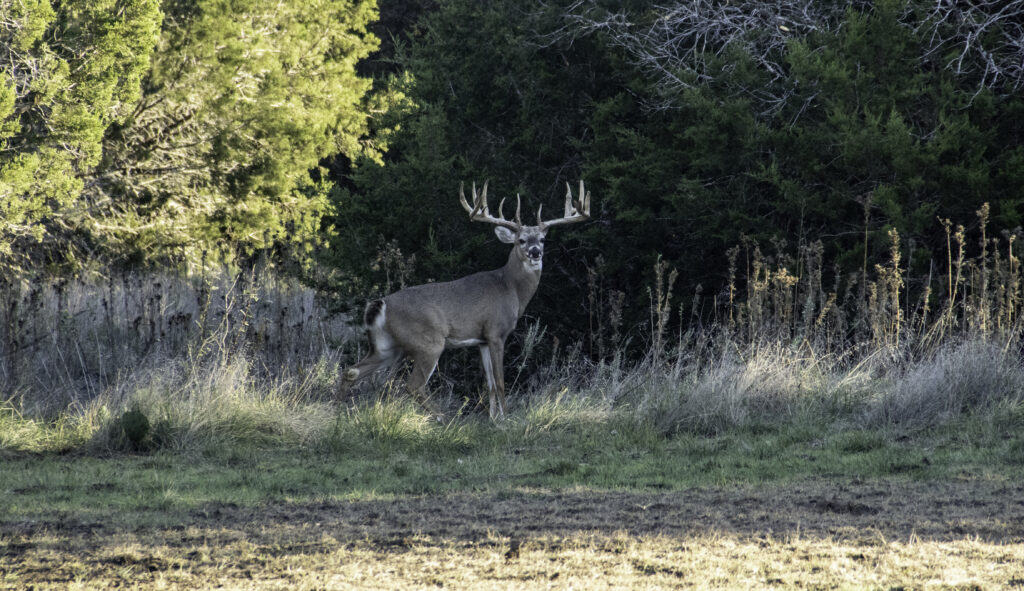Deer hunting, like any craft mastered over years, evolves with experience, deepening knowledge, and changing environmental conditions. As the 2024 season approaches, seasoned hunters are faced with not only adapting to the yearly fluctuations of deer behavior but also refining techniques that can make a difference between a successful hunt and coming home empty-handed. For the advanced hunter, it’s not just about sitting in a tree stand and waiting—it’s about understanding patterns, playing the long game, and making small, calculated adjustments that yield big results.
Reading the Landscape Like a Deer
For many, deer hunting starts with scouting. But for the experienced hunter, scouting is more than simply looking for deer sign—it’s about reading the landscape as if you were the deer. The deer’s world is a complex map of food, cover, and safety, and interpreting these elements can give you the edge.
Start by considering the pressures of the previous hunting seasons. Deer learn quickly, especially mature bucks that have survived a few seasons of heavy hunting pressure. They’ve memorized which areas are frequently hunted and have developed patterns to avoid human contact. If you’re hunting the same property each year, it’s worth considering how the deer have evolved their behavior. Are you hunting on overexposed trails or near last year’s stand location? It’s possible the local deer have become wary of these areas, adjusting their paths and timing to avoid hunters.
Understanding the relationship between food sources and bedding areas is critical. If you can pinpoint a primary bedding area, you’re halfway to success. Mature bucks typically bed in areas with wind advantages—high ground, dense thickets, or spots with multiple escape routes. Knowing how to approach these areas with wind direction in mind can drastically improve your odds. This isn’t about setting up directly in the bedding area (a surefire way to spook a mature buck) but positioning yourself along travel corridors that provide the best opportunities to intercept deer moving between food and safety.
The Changing Dynamics of Food Sources
Experienced hunters know that deer don’t operate on the same food sources all year round. In the early season, when acorns are abundant, deer gravitate toward oak groves, especially in years of a heavy mast crop. But as the season progresses and food sources diminish, their patterns shift. By late fall, deer will focus on the highest-calorie options available, which might be agricultural crops like corn and soybeans, or specific types of browse that persist through the colder months.
One aspect often overlooked is the timing of food depletion. If you’re hunting in a region where agriculture is prevalent, it’s worth paying attention to when crops are harvested. Cornfields, for example, offer excellent cover and food for deer. Once they’re cut, deer will vacate those areas, and their patterns will change almost overnight. Knowing when these shifts occur and adjusting your hunting strategy accordingly can give you a critical edge.
For example, instead of hunting the edge of a harvested field where deer once fed, you might shift to a thick, brushy area where they are now forced to forage. Deer, particularly older bucks, will transition to more secluded food sources, seeking areas that offer both sustenance and protection from human pressure.
Wind: The Invisible Enemy
If there’s one piece of advice that experienced hunters live by, it’s to always hunt the wind. But beyond just making sure the wind isn’t carrying your scent to the deer, seasoned hunters use wind as a tool. Bucks are often bedding and moving in places where the wind is to their advantage, so hunting the wind means predicting where deer will go to feel safe and positioning yourself accordingly.
During rutting season, bucks may act erratically, chasing does across open fields and in broad daylight. However, their reliance on wind doesn’t disappear. Many hunters make the mistake of assuming bucks will completely disregard safety in the heat of the rut. While bucks are more visible and active during daylight hours, they’re still using their noses to confirm safety before committing to an area. Hunting in crosswinds, or positioning yourself in an area where deer feel comfortable using the wind to their advantage, can increase your odds of intercepting a mature buck.
Adaptation: The Unseen Key
As seasons progress and pressures mount, experienced hunters are the ones who adapt. You can’t expect the same tactics to work year after year, or even hunt to hunt. Think of the first week of the season as the time to pattern deer under the least amount of pressure. But by mid-season, after the first shots have rung out and deer have learned to avoid the usual haunts, advanced hunters switch tactics.
One adaptation might be shifting hunting times. The classic advice is to hunt early morning and late evening, but this may not hold true in areas that have seen intense hunting pressure. Deer that have been spooked during traditional hunting hours can become nocturnal, moving only in the dead of night. Some of the best opportunities for savvy hunters can come during midday hunts, especially in regions where deer seek sanctuary deep in thick cover.
Another important adaptation is becoming mobile. Sticking to one stand or spot all season long is a recipe for failure. Advanced hunters aren’t afraid to go mobile, using lightweight, portable setups to move with the deer. Whether it’s relocating based on fresh sign, changing wind directions, or seasonal food sources, mobility keeps you in the game and unpredictable.
The Rut: An Opportunity and a Challenge
For experienced hunters, the rut is both a blessing and a challenge. Yes, bucks are more active, and yes, they can sometimes throw caution to the wind. But experienced hunters understand that the rut isn’t a free-for-all—it’s a complex dance, influenced by weather, lunar phases, and the overall health of the herd.
A key to maximizing your rut hunting success is timing. While every hunter loves to be in the woods during the rut, not every day of the rut is created equal. Paying attention to weather patterns during the rut is crucial. Cold fronts are the hunter’s best friend during this time. A sudden drop in temperature can spur deer into a frenzy of activity, particularly mature bucks chasing does. On the other hand, warm days during the rut can bring activity to a grinding halt.
It’s also important to consider how bucks are moving based on the stage of the rut. Early rut might see bucks cruising during daylight hours looking for does. During peak rut, they may lock down with a single doe, spending days in a small area. Understanding these phases allows advanced hunters to adjust their strategies. For example, during the “lockdown” phase, focusing on thick cover where bucks might be holed up with a doe can be a game-changer.
For the experienced deer hunter, every season is a new puzzle to be solved. It’s not just about having the right gear or setting up in the perfect spot—it’s about understanding the nuanced behavior of deer, adapting to the environment, and never underestimating the importance of wind, food sources, and pressure. This year, as you head into the woods, remember that the hunt is as much about thinking like a deer as it is about finding them. The most successful hunters are the ones who are constantly learning, adapting, and pushing the boundaries of their craft. Happy hunting!





